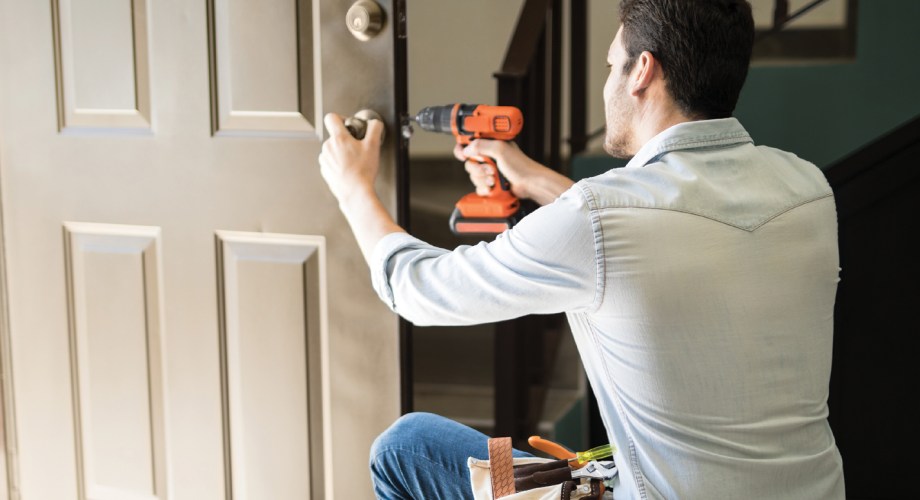Q: I have an exterior door that has become hard to close. I don’t know if the door is expanding due to humidity or moisture. Do I need to plane down the edge or are there alternatives?
A: There are natural reasons why wood expands and contracts depending on climate. Many door problems are a result of the following:
When the door was newly installed, it should have had approximately one-eighth to one-quarter of an inch revealed around the entire jam. This allows for expansions/contractions (in some cases weather stripping). Over the many years of service, the door probably has been painted more than a few times. Layer after layer of paint has closed the gap between door and jam. The door must now reveal that one-eighth inch; this is done easiest by removing the door from its hinges (don’t forget to remove your hardware). Do not try to plane or sand a hanging door, the result will not be attractive.
The second reason why the door is expanding and contracting or suffering the effects of moisture is the top and bottom of the door are not painted or sealed allowing moisture to swell or warp the door. Unsealed edges allow moisture to access the door. While the door is off its hinges, paint the top and bottom. Exterior doors, by nature, are very heavy. Chances are the hinges may be loose in addition to a buildup of paint and dirt. Tighten each hinge screw; check that the hinge is not bent. Clean out dirt buildup around the doorframe. If you find some of the hinge screws are not tightening properly, remove the screw and tap in a glue covered wood dowel into the hole. Reinstall the screw and tighten. If the above does not solve the sticky door issue, check to see if the door is warped. You can plane down a slightly warped door, if the door is badly warped, it may need to be replaced. Another possibility is the settling of the building putting pressure and deforming the doorframe. Using a plane to reshape the door to match the frame is a solution.
Q: I have an older apartment building and would like to soundproof the walls between the units and in the main bathroom. Can you give me information about soundproofing walls?
A: There are various methods for sound proofing walls. One is to drill small one- or two-inch holes at the top of the wall and just below any fire blocks in the wall. You can rent a blower machine for applying blow-in insulation at most rental centers. The wall voids can be filled with loose insulation. The holes will then need to be repaired. Soundproofing can also be done with specialized paint that can reduce sound by up to 30% through the transference of heat. A new soundproofing drywall is also on the market that hangs and finishes just like traditional drywall.
Do you have DIY maintenance questions? Send them to [email protected].
